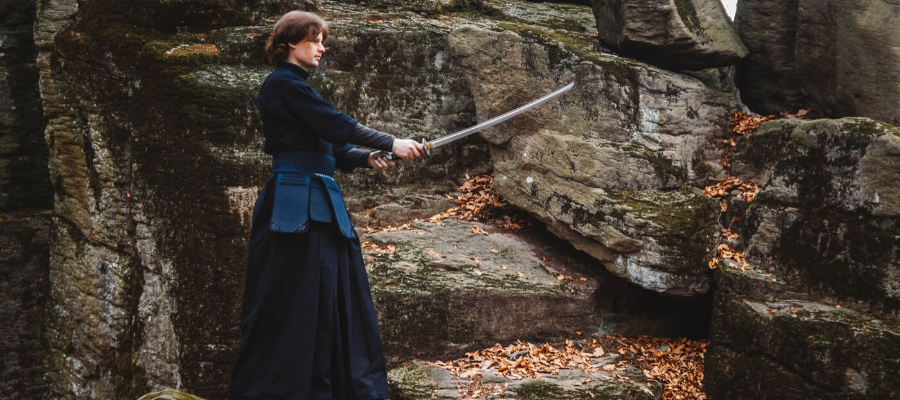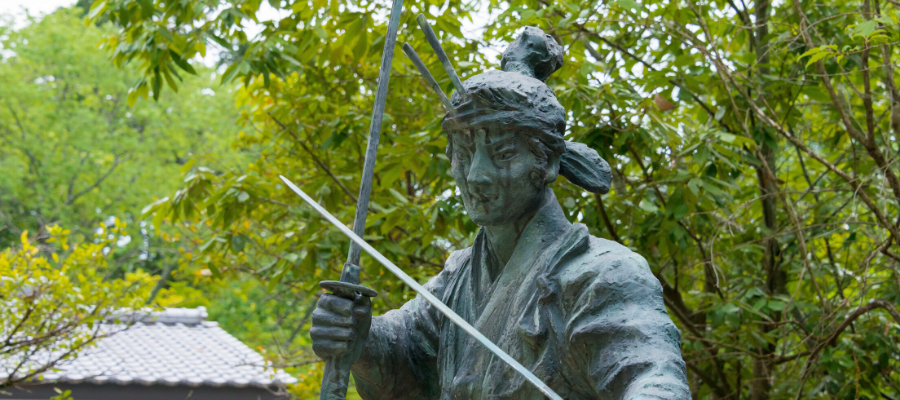Swordsman Skills and Japan
Posted by MRL on Jan 23rd 2020
Ah, the stories of Japanese skill with swords and their style of fighting has reached epic proportions in film and literature hasn't it? Like most things, some of the hype is warranted, but much of it isn't. Tall tales have simply grown taller in the retelling.

Individual skill with the sword reached its greatest period in Japan after the Tokugawa Shogunate was established in the early 17th century. Ironically, this was a peaceful period that saw no war. As a result the samurai could dedicate time to the practice and art of the sword in single combat. The practice proved very successful. But why not before this? Well, there was pretty much constant warfare, so there simply wasn't time to dedicate to the art and minutiae of it all. And the skills needed in single combat are quite different than those needed in a full-scale battle.

As a side, most agree that one of the greatest Japanese swordsman was Miyamoto Musashi. His famous two-sword school is cited as the basis for much of the success of the Japanese style. You would think him the founder of anything involving two blades. However, it was actually created after watching the Portuguese fighting with sword and dagger. At the time, Europeans were also considered extremely dangerous swordsmen. The Filipino art of Escrima was also developed after watching the Spanish fight with sword and dagger. Like today, when you find something that is proving successful you take what you can from it and apply it to your own needs. In this case, to individual sword fighting.
Why not take all aspects of a style if it is so deadly? A key duelling component to Western martial arts is the lunge. This core movement was never fully incorporated into Japanese styles. Some of our most influential martial artists today have pointed out that the Japnese never really developed the lunge. Ever think about that basic movement we simply implement in Western martial arts? Makes sense though. When you have relatively shorter legs in relation to your torso, a lunge is far less effective. For taller Europeans, this simply made sense.
So, what is most effective in combat and who influenced who and what is real? Opinions run the gamut. Honestly, no style is any better than the person that is using it. Sport fencing and Kendo are "real" and great exercise, but neither can properly and realistically simulate combat in the true sense. Being expert in them doesn't carry over. The other benefits of the martial arts are many and if you can physically do them we highly recommend you try one. But if it were us in a combat situation and guns were not on the menu, we'd take a spear or a sword and shield into the fight every time, even with less training.
Regardless of whether you agree or not, look at fighting styles and their stories with an honest and realistic eye. The Ninja couldn't make themselves invisible and walk through walls, guns that hold six rounds can't fire 10 between reloads, swords can't cut through steel plate with ease and every sword, no matter the source, will nick and break when struck edge to edge. Appreciate all swords and styles for what they are. Remember each was developed for a point in time. Each has its advantages and disadvantages.
Finally, look with a critical eye at the reality of the subject, and never forget, if you are ever placed in a position you need to use your blade, it won't magically leap from its scabbard to valiantly defend you. Nor will it deflect bullets, it never did, and it is not reasonable to assume they can today...you wouldn't be with us for too long and we certainly don't want that! As for the mystic nature of the samurai and the katana, hype, even historical or made in Japan, is still hype.
Related Blogs
https://www.museumreplicas.com/the-japanese-samurai-sword-a-history-well-preserved


